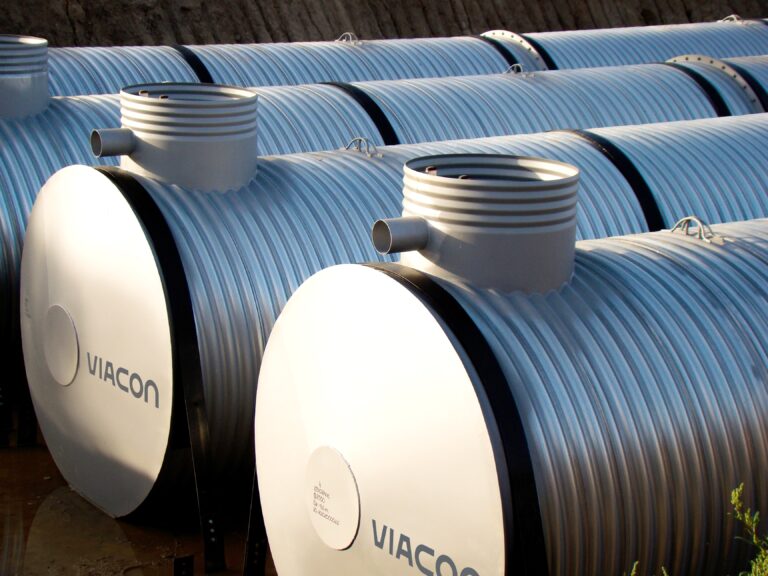ViaCon Storm Solutions
Flood prevention and groundwater infiltration
With climate change intensifying, cities are increasingly confronted with challenges, such as sudden and unpredictable flooding. To maintain the functionality of urban infrastructure, even during heavy rainfall, effective stormwater management is essential.
Urban planners are recognising the critical role of stormwater retention, infiltration, and surface drainage in sustainable city planning. Underground water tanks play a key role in flood prevention and groundwater infiltration, ensuring efficient management of excess water.
Large stadiums, for example, rely on water tanks to handle heavy rainfall without the risk of flooding. By capturing and storing rainwater, these systems help keep playing fields in optimal condition while contributing to sustainable water management. This approach benefits both the environment and the experience of fans, creating a practical and eco-friendly solutions.
Customisation & value engineering
ViaCon’s bespoke solutions combine retention, infiltration, and carrier piping creates cost-effective solutions that reduce space requirements and eliminate the need for extra manholes. Our pipes can be custom made in different diameters and lengths.
Cost advantages
Take advantage of total cost advantage versus competing materials, such as plastics and concrete for larger projects subject to loads, water contamination, and space constraints.
Supporting sustainability goals
Up to 70% reduced CO2e footprint when compared to similar solutions made of other materials. Steel is also environmentally friendly as it is 100% reusable.
Time-saving installations with easy maintenance access
Experience up to 80% faster installation, paired with simple maintenance through standard manholes—making our solution a practical, cost-effective, and sustainable choice for stormwater management.

Applications:
- Data centres
- Parking lots
- Roads
- Warehouses
- Logistics centres
- Parks
- Housing
- Schools
- Supermarkets
Steel: The smarter choice
The strength and sustainability of steel provides durability and lifespan advantages for construction projects.
Twinstore tanks
ViaCon TwinStore uses geomembrane-lined excavations, perforated geotextile-wrapped joints, and stone backfill to minimize footprint and maximize stormwater storage.
3-in-1 Solution
A stormwater attenuation tank is engineered to gather and retain surplus surface water runoff during significant storm events. Subsequently, the water is discharged from the storage tank at a regulated pace, typically through a controlled flow mechanism.
Underground attenuation tanks are indispensable for urban stormwater management, mitigating the effects of heavy rainfall on local communities and the environment. They play a pivotal role in preventing flooding, erosion, and water pollution, while fostering more effective and sustainable water resource management practices.
During periods of heavy rainfall, stormwater attenuation tanks collect and store excess rainwater runoff from impermeable surfaces such as roofs, roads, and parking lots. The stored water is then slowly released into the drainage system or nearby watercourses through an outlet pipe or controlled release mechanism. This controlled release helps alleviate pressure on downstream drainage systems and reduces the risk of flash flooding.
Determining the size of an underground attenuation tank involves considering various factors, such as the site’s location, depth of the drainage system, storm return period, soil type, and infiltration rate. Location plays a crucial role in estimating the average annual rainfall in the area.
Installation of our stormwater attenuation tanks is straightforward and typically involves excavating a suitable site, placing the tank components in the excavation, and backfilling around the tank to secure it in place. Our tanks are factory-fitted with any necessary accessories, such as access shafts, ladders, and inlet/outlet connections, to minimize on-site fabrication work and streamline the installation process. Once installed, the tank is connected to the existing drainage system or natural watercourses, and any necessary flow regulators are calibrated to ensure optimal performance.

Welcome to the ViaCon design toolkit
We have put together a selection of useful tools, calculators, information and downloadable resources to help you find what you need quickly and get the most out of your ViaCon system.
